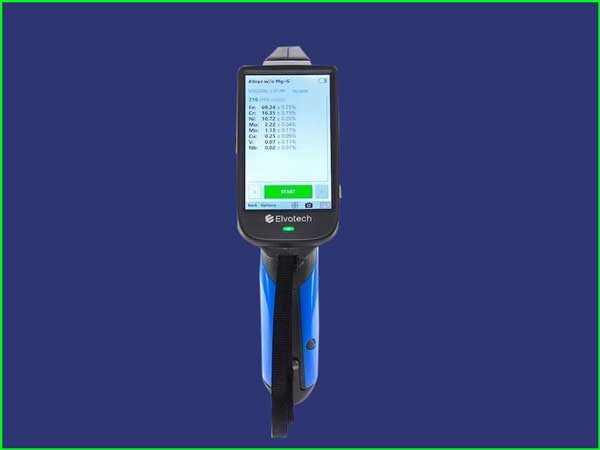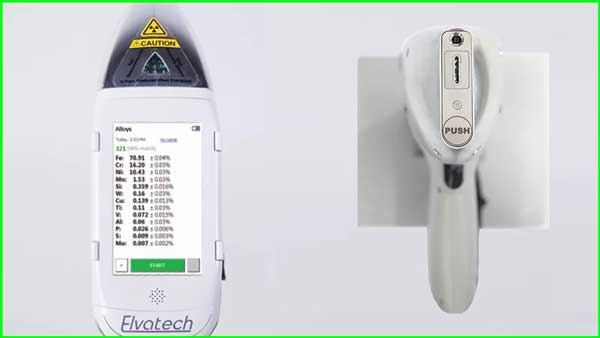The method of X-ray fluorescence analysis is currently one of the most widely used methods for quantitative analysis of the chemical composition of materials. Due to its speed, accuracy, and ease of use, XRF is actively used in solving a wide range of tasks in various fields of science and industry.

X-ray fluorescence analysis is based on the study of the characteristic emission spectrum of the sample, which is obtained by the interaction of X-rays with the atoms of a substance. Characteristic radiation occurs when an atom absorbs a quantum with an energy sufficient to ionize an electron from its inner electron shells, and the subsequent transition of an electron from the upper energy levels to a vacancy appears, which is accompanied by the emission of a quantum with an energy equal to the difference between the energies of the electronic levels of the atom. Since the energy spectrum of an atom, and as a result, the set of characteristic lines, depends on the atomic number and is unique for each element, based on the peaks present in the spectrum of the sample, it can be concluded that specific elements are present in it, and their concentrations can be estimated based on the intensity of the characteristic lines.
One of the most popular methods for the quantitative calculation of element concentrations based on the characteristic spectrum is the method of fundamental parameters. It is based on the construction of a theoretical model of the interaction of X-rays with matter, which takes into account that the intensity of a particular line of the characteristic spectrum depends not only on the concentration of the element to which it belongs but also on the concentrations of other elements in the sample, due to the scattering of characteristic radiation quanta by them.

The XRF result represents mass (the percentage of the mass of the sample that makes up the mass of a given element) or atomic (the proportion of atoms of a given element in the sample) concentrations of elements in the testing sample, it is important to understand what exactly is meant in the final result of the measurement, since due to the fact that different atoms have different masses, these quantities differ from each other.
To obtain correct and accurate results, you must first make sure that the instrument is calibrated for the task at hand.
The method of fundamental parameters described above, although it allows measurements without standards, includes rather complex mathematical calculations, with a large number of variables, and to obtain the most accurate XRF results, the analyzers are calibrated for a specific set of tasks. Therefore, one should not expect accuracy in soil analysis from a spectrometer calibrated to measure alloys, the results obtained are likely to be quite far from reality. The presence of undetectable elements in the sample can also play a significant role. The XRF method is capable of detecting elements from sodium to uranium and is not suitable for the analysis of materials that include elements outside this list, since when processing the spectrum it is impossible to take into account their effect on the intensities of the characteristic lines. To analyze materials containing undetectable elements, it is necessary to use other methods to determine their concentration and to correct the results obtained by the XRF method accordingly.
It should also be taken into account that the homogeneity of the sample plays an important role in the analysis of measurement results. If the measured sample is heterogeneous, that is, different parts of the sample have different content of elements, the result of one measurement will reflect the composition of not the entire sample, but the area on it, the size of which is determined by the collimator installed on the spectrometer. In this case, to estimate the concentrations of elements in the entire sample, one should average the results of measurements made at different points of the sample of interest. Thus, it should be understood that the result of a particular measurement carries information about the composition of the region of the sample, limited by the collimator of the spectrometer, and the depth of penetration of X-rays into a given material (for example, for metals, this is usually up to a millimeter).If, when performing an analysis using an XRF spectrometer made by Elvatech, there are doubts about the correctness of the results obtained, you can check the spectrometer by measuring a sample with a known composition. Often incorrect results are due to operator errors during analysis. For example, if the sample is loosely attached to the detector window, the concentrations of light elements in the results will be underestimated, since low-energy radiation is much more scattered in the air than high-energy radiation. Also, the measurement results may be distorted due to the presence of dirt on the sample or the protective film of the detector.